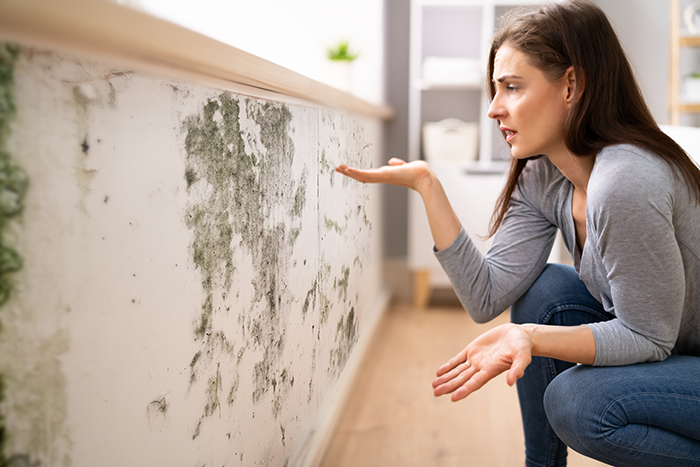How to find and eliminate mould in your home
The
presence of mould in a home is alarming, especially since there are more than
100,000 species, including dry rot fungus.[1]
Extensive mould growth can cause major health problems such as headaches,
shortness of breath, and asthma symptoms.[2]
Here are some tips for recognizing and eliminating mould while maintaining the
air quality in your home.

Finding mould on walls
To grow, mould needs water and nutrients such as wood, gypsum, and dust.[3] It can also grow inside ventilation ducts, walls, and ceilings, where it can’t be seen. It usually appears due to high humidity levels or condensation caused by broken plumbing, water infiltration, or lack of ventilation.
Check out:[4]
- Black or green spots on walls and ceilings, around windows, or in closets
- Stains, buckling, or peeling on walls and ceilings
- An earthy or mouldy smell
It is not usually necessary to test surfaces or air quality for the presence of mould. Inspecting the roof, attic, siding, and joint seals is often the best way to find the cause and fix it.
Decontaminating your home
Affected surfaces should be wiped down with a clean cloth and all-purpose cleaner right away. Avoid chlorinated agents such as bleach.Dispose of deteriorated or porous materials in airtight bags or containers.
Properly ventilate the room and ask other occupants to stay away. If necessary, isolate the contaminated area with plastic sheeting.[5] To prevent contact with mould, wear rubber gloves, goggles, and a dust mask.
If the contaminated surfaces are bigger than one square metre, difficult to wash, or the mould comes back after cleaning, contact a company that specializes in mould decontamination.[6]
Preventing mould
A few simple steps can prevent mould from growing in your home:[7]
- If there has been water damage, completely dry the area and discard used and porous materials within 24-48 hours.
- Avoid high levels of humidity by monitoring window condensation.
- Keep the house well ventilated by opening windows or turning on the air exchanger.
Anti-mould paint can also be helpful, especially in high-risk environments such as the bathroom.
Not sure if you’ve properly decontaminated your home? Bring in an expert to fix the problem. This will also ensure that the value of your home isn’t compromised.
Are you passionate about real estate? Subscribe to the Centris.ca newsletter now.
See also:
3 tips for cleaning mould on basement concrete
What should the humidity be in a house?
Solutions for moisture in the basement
[3] https://www.caaquebec.com/en/at-home/advice/tips-and-tricks/tip-and-trick/show/sujet/mould-in-your-house-get-rid-of-it
[4] https://www.quebec.ca/en/housing-territory/healthy-living-environment/finding-and-eliminating-mould-from-your-home
[5] https://www.caaquebec.com/en/at-home/advice/tips-and-tricks/tip-and-trick/show/sujet/mould-in-your-house-get-rid-of-it
 The Largest Number of Homes for Sale
The Largest Number of Homes for Sale



